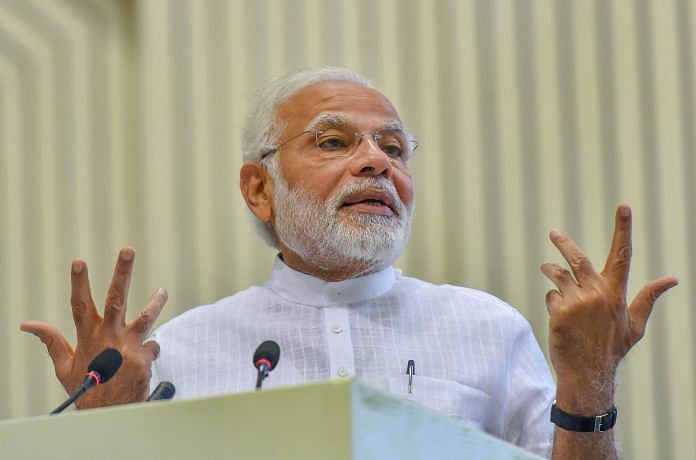BJP looks comfortable with 273 MPs but given the timing of the motion, ahead of the election year, a lot more is at stake.
New Delhi: Prime Minister Narendra Modi’s NDA government will face its first no-confidence motion Friday as Parliament gets set to witness its 27th such motion.
Besides being a test of the Modi government, the no-confidence motion will also check the strength of opposition unity.
The last trust motion was moved in 2003 against the Atal Bihari Vajpayee-led government but nothing came of it.
Here is a quick rundown of what is at stake and what to look out for.
The numbers
With the strength of the House down to 535 (excluding speaker Sumitra Mahajan) due to vacancies, the Bharatiya Janata Party (BJP) at 273 is well above the half-way mark of 268. As a whole, the NDA has 314 seats.
The BJP also hopes to get the support of neutral players like the All India Anna Dravida Munnetra Kazhagam (AIADMK), Biju Janata Dal (BJD), Telangana Rashtra Samithi (TRS), Indian National Lok Dal (INLD) as well as Independents. The government hopes that even if these parties don’t vote in its favour, they will abstain.
Supporting the motion are currently a total of 147 MPs from opposition parties, including Telugu Desam Party, Congress, Trinamool Congress, Communist Party of India (Marxist), Nationalist Congress Party, Rashtriya Janata Dal, Samajwadi Party, YSR Congress and All India United Democratic Front, among others.
What’s at stake?
The no-trust vote is crucial, given that it comes less than a year ahead of the Lok Sabha polls, since it will bring political permutations and combinations to the fore and clearly show which side of the divide each political party stands.
It will also be interesting to note how sulking ally Akali Dal votes. The other sulking ally, the Shiv Sena, on Thursday evening agreed to support the government, after a telephone chat between BJP chief Amit Shah and Sena president Uddhav Thackeray. The BJP will also keenly watch how its rebellious leaders like Patna Sahib MP Shatrughan Sinha and Darbhanga MP Kirti Azad behave.
The opposition, meanwhile, will use this as an opportunity to assess where each party in the motley group stands. The number of parties that eventually come together to vote against the BJP will be an indication of the possible alliances in the election year.
The government may not be too worried about sailing through, but a lot more is at stake in terms of perception, optics and understanding inter-party dynamics for both the BJP and the opposition.
The speeches
The two speeches to watch out for will be those of Prime Minister Narendra Modi — expected to speak only later in the evening — and Congress president Rahul Gandhi.
Earlier this year, Modi had dared Gandhi to speak for “15 minutes without looking at a paper” on Congress government’s achievements. All eyes will be on Gandhi to see if he takes up this challenge and manages to outmanoeuvre the government. Since 2014, if there is one criticism that really hurt the Modi government, making it change tack, it was Gandhi’s “suit boot ki sarkar” jibe.
Modi is likely to take the aggressive route and come out all guns blazing, according to highly placed sources in the BJP. The timing of the PM’s speech also gives the party important prime-time. The government has decided to use this as an opportunity to attack the opposition, put forth what it believes to be its achievements and make it yet another platform for its 2019 campaign.
Sources said the idea behind admitting a no-trust motion was to call out the opposition’s bluff and blunt its attacks.







38 minutes is what the Congress is down to. Sobering thought.